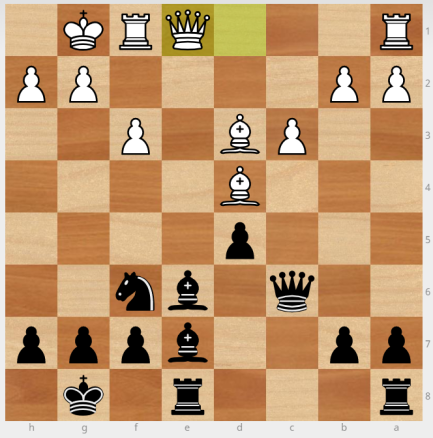Have you traded stock with paper money before?
Most of the time, this is an exercise used in High School or College finance classes, and it’s an opportunity for the students to learn about financial literacy.
I’ve done that.
When I traded stock with paper money, I did not check the daily ups and downs of stock trend for months.
During a good market (2009, right after the 2008 crash), when I returned to check results nonchalantly six months later, paper money have risen over 20%. I wish I could turn the time back and put in some real money instead.
Now fast forward to the first time I put $100 of real money into the stock market. The market had ups and downs as usual, however, this time my psychology changed completely.
I was checking stock tickers over 10 times a day on my phone, and everytime there’s a $1-2 of movement in price, I wondered whether I made the right decision to buy and when should I sell.
What does this story has anything to do with chess tournaments?
The title of this post tells you.
Playing in rated chess tournament versus casual games is like trading stock with real versus paper money.
The difference is in a player’s psychology. To truly improve in chess, you have to go thru the trials of tribulation in facing tough times from tournament games.
Whenever I talk to parents of new students, we discuss how to improve in chess (topic for another time) and when should a student start playing in tournaments.
My recommendation: once basic chess skills are developed and the student has played 1-2 unrated tournament to get a feel of the environment, it’s time to get into the action of rated games.
Sometimes I hear parents say I want my child to work more at home and be ready to play in tournaments where we know s/he will have a good showing.
I politely disagree.
Chess tournaments are not like school tests.
School teachers often give students study guide after study guide. If the student is well versed in all the practice questions, s/he is ready for the test and getting an A or 100 is no problem.
In chess tournaments, doesn’t matter how prepared you’re, you may face any of the following circumstances
-Other player’s strength; Stronger than their rating indicates
It’s often hard to gauge exactly how strong is your opponent. They can come from a different country or state, or they took time out from chess and only came back recently.
-You’re own emotional response to meaningful games
The way you feel in a casual game is not the same as a meaningful game. The stock analogy earlier in the article covers this point. The oh-no moments will be much more painful than a skittle room’s game.
-Tournament Surroundings
There are tensions in the tournament room. In any given moment, the room is quiet, you can hear chess pieces move but nothing more. The nerves and the tension become less intimidating for the more experienced players.
————–
You can only get better in tournament chess by experiencing more.
And remember, you’ll never be 100% ready.
Treat chess tournaments as job interview instead of school test, there is no guarantee, but the best practice to improve your odds of success is to experience more and learn from these experiences.
















 In this section, you’ll rank the players based on how you think they will finish in this year’s edition of the US Chess Championships and US Women’s Championships! But be careful – here’s the twist: the higher you rank a player, the more they will count towards your final score. Depending on your ranking, each player will have a different boost ranging from 0 to 9, and that boost multiplied by each player’s score will be added to your point total!
In this section, you’ll rank the players based on how you think they will finish in this year’s edition of the US Chess Championships and US Women’s Championships! But be careful – here’s the twist: the higher you rank a player, the more they will count towards your final score. Depending on your ranking, each player will have a different boost ranging from 0 to 9, and that boost multiplied by each player’s score will be added to your point total!